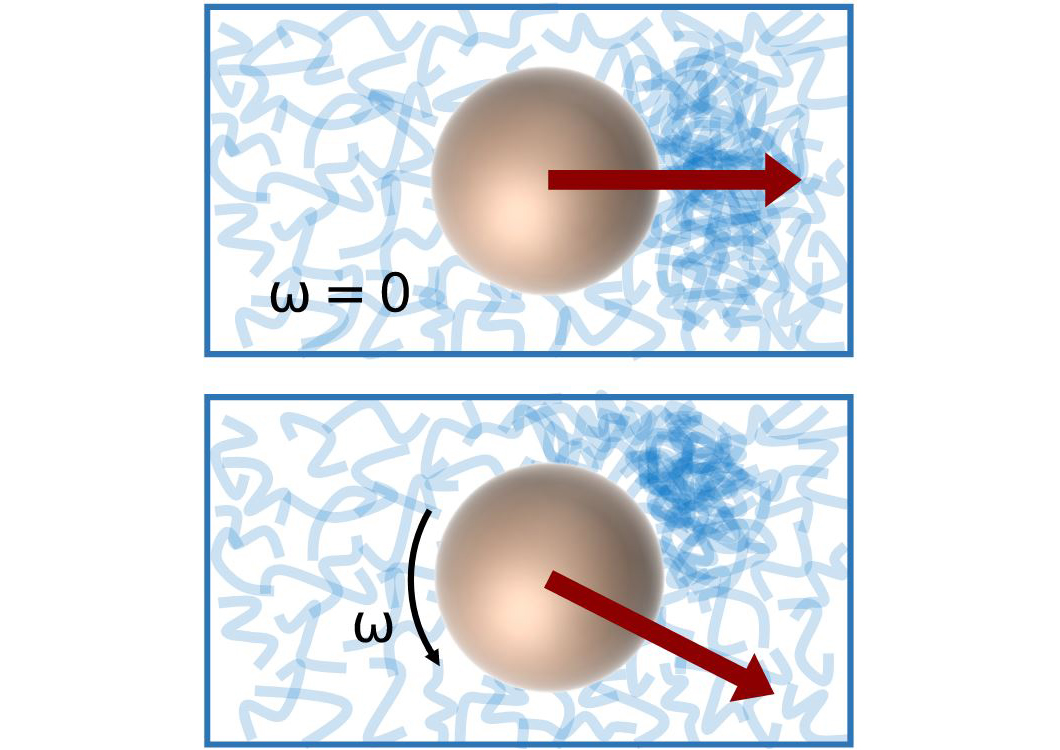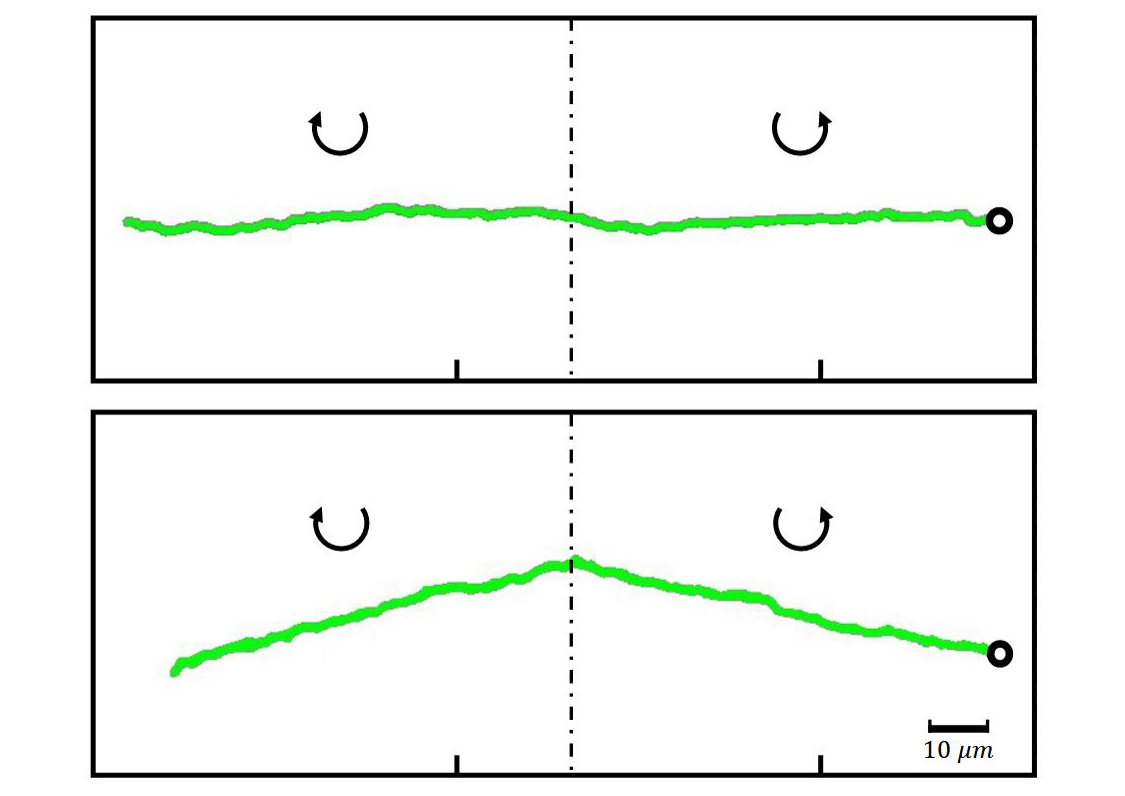
Curveball at the microscopic scale
The Magnus effect causes the curved trajectory of spinning footballs or tennis balls, and it can even be used for the propulsion of ships. A team of physicists led by Clemens Bechinger have now documented, for the first time, the existence of the Magnus effect at the microscopic scale.
Whether you are familiar with the Magnus effect or not, you have certainly often made use of it, e.g. when kicking a curveball or putting spin on a tennis ball. The Flettner rotor even employs this principle to propel ships or to provide lift forces for aircraft.
The Magnus effect arises whenever a spinning object moves through air or a liquid. As a result of the rotation, the flow of the surrounding substance is deformed in such a way that differences in velocity are generated on the opposite sides of the object. This is similar to the asymmetry of the air flow on the upper and lower side of an aeroplane wing which results in a lift force. Magnus forces were first used in Flettner rotors from the 1930s to propel ships, and it has recently been rediscovered by commercial shipping for its energy efficiency. In addition to this, the Magnus effect also plays a role in many other areas of science e.g. during the formation of planets through collisions with rotating rocks.
Does the effect disappear at the microscopic scale?
In general, the Magnus effect becomes smaller and smaller as the size of the rotating object decreases. In a simple liquid, the effect disappears almost completely for a rotating sphere of only a few micrometres in diameter (one millionth of a metre).
This assumption is now being corrected by physicists from Konstanz and Göttingen led by Clemens Bechinger. In a recent study, they show that the Magnus effect can actually be very large at the microscopic scale when the rotating sphere is placed in a viscoelastic fluid. Unlike water, viscoelastic fluids possess both fluid and elastic properties. Some typical examples include polymer solutions or, in biological systems, blood.
The scientists' observations can be used to develop new mechanisms for moving microscopic particles. Potential applications could involve future mini-robots that move through the blood stream and target specific positions in the body.
Liquids with time-delayed response
In their experiments, the researchers used magnetic miniature glass spheres whose rotation was generated by a rotating magnetic field. The spheres also moved at a constant speed through a viscoelastic fluid. Just like raised bread dough that has been punched down and does not immediately return to its original shape, viscoelastic fluids also have a delayed reaction to a moving, rotating object. This causes a distortion within the fluid, as it moves together with the particle and pushes it to the side in the process. This effect is very small in simple liquids such as water, since the water molecules react almost instantaneously to the movement of the tiny spheres.
Another effect of the delayed reaction of the viscoelastic fluids is that the Magnus force – unlike that of a tennis ball, for example – does not disappear immediately when the rotation stops. The researchers confirmed this prediction in their experiments. The physicists were especially surprised by the unexpected strength of the Magnus force, which caused the rotating object to diverge massively from a straight trajectory. This allows the movement of particles to be controlled down to the nanometre range, which – in the case of the mini-robot example – is essential for the delivery of drug-loaded particles to specific locations in organisms.
Key facts:
- Original publication: Xin Cao, Debankur Das, Niklas Windbacher, Felix Ginot, Matthias Krüger and Clemens Bechinger: Memory-induced Magnus effect, Nature Physics, 2023
DOI: 10.1038/S41567-023-02213-1
Link: https://www.nature.com/articles/s41567-023-02213-1 - Professor Clemens Bechinger is a professor of colloidal systems and a member of the Cluster of Excellence "Centre for the Advanced Study of Collective Behaviour" at the University of Konstanz
- Collaboration of physicists from the University of Konstanz and the University of Göttingen
- Funding provided by: Collaborative Research Centre SFB 1432 "Fluctuations and Nonlinearities in Classical and Quantum Matter beyond Equilibrium", German Research Foundation (DFG)

![[Translate to Englisch:] [Translate to Englisch:]](/fileadmin/pi/fileserver/2023/magnus_effekt_2.jpg)
